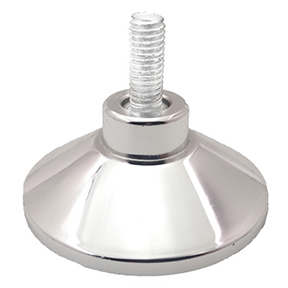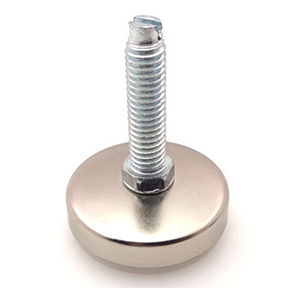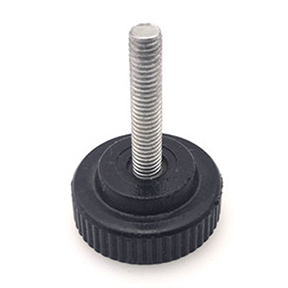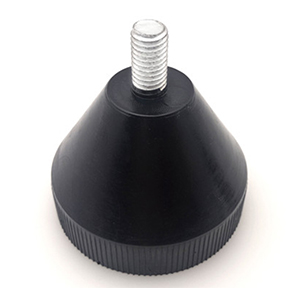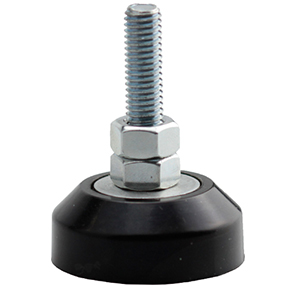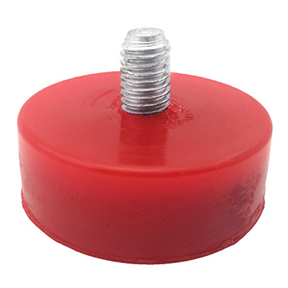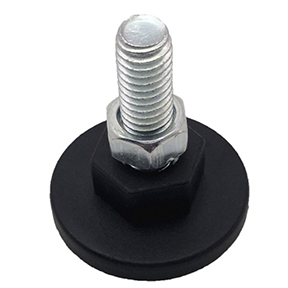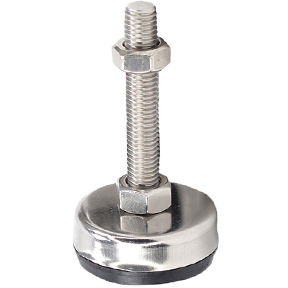Under negative overload ejection handle a certain type of rigid material impact on flight safety analysis
2013-07-11 14:40:20
Wu Xiaojun Li Tao-generation security
(People's Liberation Army Navy in Xiangfan Xiangyang, Hubei Aviation Military Representative Office 441003)
Abstract cited Russia ejection handle a certain type of localization of rigid material, the negative overload during the flight, as the pilot interference between the legs and the handle, there is the possibility of ejection seat accidents. In this paper, modeling results with field data analysis and comparison, in theory, deny the existence of this possibility to overcome the difficulties of using experimental verification.
Key words ejection seat; handle: negative overload; security
0 Introduction
Since a rocket ejection seat localization since. Compared with the Russian-made pieces ejection handle. There has been more rigid polyurethane material and difficult to bend contraction issue that directly affects the safety of the aircraft and the pilot's comfort, especially in the aircraft maneuvering sinking or inverted negative overload conditions. Since the lower end of the handle legs pilot direct contact exists. May bring out unexpected result seat ejection handle start situation. Flight safety will pose a serious threat. As for the relative weakness of the Russian-made pieces of material, negative overload legs clamp down when the handle, the handle can be bent in the direction heading towards contraction avoid this situation. In the experimental verification difficult to achieve in the case, this article will use the method of mathematical modeling under negative overload handle this type of rigid material impact on flight safety in the theoretical analysis.
A three-axis coordinate system established
Spatial coordinate system is established on the basis of mathematical modeling. To facilitate the analysis period. Select the seat and the handle coordinate system XYZ coordinate system XIY121, which coordinates the seat ejection lever fulcrum in the original tap, rather than broad focus on the seat.
Seat coordinate system XYZ: Select a fulcrum for the ejection handle coordinate origin. X-axis aircraft heading along the course is positive: Y axis horizontal perpendicular to the X axis; Z-axis direction overload, positive downward.
Handle coordinates XIY121: Select ejection handle pivot axis of the coordinate system origin Zl direction along the handle downward as positive: Yl axis and Y-axis coordinate system the seat in the same direction, Xl Zl axis perpendicular to the axis, along-track direction is positive, but there is a certain heading angle d.
2 Mathematical Modeling
According to the actual pilots fly and flight conditions. To facilitate the calculation of mathematical models from engineering appropriate simplification: a) without considering the bending deformation will handle the entire handle consider a rigid member, its approximate shape of an isosceles triangle structure, but considering the two points between the handle angle of this situation; 2) will be considered as a negative overload linear variation value, ie a = ng, n for the overload factor, ignoring one of the non-linear changes: 3) in the analysis process, always consider the human chair system an opposite stationary objects: 4) as the handle is smooth plastic material, after the human thigh dress shape is relatively smooth, the friction between ignored.
Ejection lever handle formed by two points, of the handle between the ^ angle. Negative overload condition, the lever clamping legs due mainly generated by the pull-out forces and cause it to bend the bending force of contraction. These two forces exist, and in a certain range was proportional relationship, with the pulling-out force increases, while also increasing the bending strength, bending force if not find it induced bending lever handle is pulled upwards, then serious impact on flight safety: but if the bending force to achieve the degree of bending the handle can not pull the handle. The handle will be generated pilot clamping legs pull out force, which has no effect on flight safety: the practical effect of these two forces exactly vertical direction, For convenience, the following mathematical modeling process, this two force distribution analyzed separately, the final comprehensive demonstration, get results.
2 l Handle Pull force model analysis
Figure 1 is the handle of the seat xz coordinate axis direction force projection plan. F is negative overload conditions in human legs reaction force generated on the ejection handle. Upward direction along the direction of gravity. Fl. F2 as its component. d is the angle between the handle projection of the X-axis,
According to Newton's second law, F = Ma. Where M is the body weight. A is a negative overload. a = ng. Stress analysis based on illustrations, Fl = Masinc, F2 = Macos, ce; Fl acts directly on the handle, direction consistent with the handle, pull handle determines the degree: F2 determine the degree of bending the handle.
Two of the handle is not in the same plane, the mutual angle between the a ^ v, shown in Figure 4. However, due to symmetrical on both sides of the handle at the Yl axis force balance eliminated. Zl direction of the force F5 no relationship to the point 1, the analysis process does not therefore be considered. But in the following analysis of bending force must make analysis.
2.2 Analysis of the handle bending force calculation
Figure 1 analysis. F2 acts directly on the handle. Xl coordinate direction of the handle axis, the handle determines the degree of bending, but because of the existence of the angle between the handle is called, in fact the real handle bending force is a component force F2, i.e. F7, shown in Figure 5, the figure V-shape of the handle in XIY1 plane projection.
3 Numerical Analysis
3.1 Handle Pull force numerical calculation
Assuming pilot for pilots under a large weight, M = 81.5kg, a = ng (n take 1,2,3), the pilot flying dress, can be approximated by considering the handle and the seat back in the same parallel line, namely Ⅸ Seat installation angle is approximately 17 degrees; B is 120 degrees (1:1 drawings were measured by means of a protractor to get).
Then F5 = Masincts,. ~ -,,,, S (90 to compete)
= 8 1.5 * n * 9.8 * sin17 * sin60 * r, os30
81.5 * n * 9.8 * 0.2923 * 0.866 * 0.866 = 175.085n N (n = l, 2,3)
3.2 Numerical handle bending force
Assuming pilot for pilots under a large weight, M = 81.5kg, a = ng, d is approximately seat installation angle; called by field measurement of 120 degrees.
Then F7 = Fsin hand = Macosce * l / 2 * s, n hand
4 Analysis
Ejection handle a certain type of force to pull out the range of 23 ~ 28kgf. Through actual field measurements on two points lower middle position of the handle fixed wire, using 300kgf said spring force is applied, tested, 70kgf tension has begun to cause the handle bent, 80kgf obvious deformation, 1 lOkgf handle when fully collapsed. According to the test point of the tension direction and, in fact, a negative analog overload the force F2. Considering the negative overload is 1. A coefficient n = 1. Then F2 = 81.5 * 9.8 * 0.956 = 763.6N (77.92kgf), that is, when negative overload is 1, the handle has started bending. But this time the corresponding handle pull F5 = 175.085N. Far less than the minimum technical requirements pull force 225.4N (23kgf). Description Now that appear curved handle is not pulling contraction. Taking into account the deformation of the handle have been obvious at 80kgf will pull force to F2 = 80kgf, this time corresponding negative overload factor of n = 1.0267. Pull handle force F5 = 179.76N (18.34kgf), is less than the minimum force of the handle out 23kgf. However, actual use, should also consider the handle and the friction between the pilots legs. According to the movement of inter-relationships. You can determine the direction of the ejection handle friction suffered should be along the lower edge of the handle upward. Filial consider friction. The handle bending force F2 should be bigger than it is now.
For convenience, the above analysis would pull out and bending forces were considered, but in practice, the analysis of the negative overload ejection handle a certain type of rigid material impact on flight safety. Force must be integrated into the pull handle and bending forces, after the handle is not a complete rigid body. Force deformation exists, therefore, a negative overload condition, the handle is pulled out process if there is bending shrinkage. Will cause the pilot pulled his legs no force on the handle pivot. Pulling-out force is increased within a certain range in direct proportion was reduced speed condition. Therefore will not cause accidental ejection start: but if the pull handle accidental ejection force reaches the requirements start after (23 ~ 28kgf), handle not appear affected by the deformation, the catapult will cause an accident. Through the above analysis shows that, with negative overload increases, the degree of bending the handle became clear at this time although F5 increases, but because the handle is bent. F5 will gradually lose the point of the force, was rapidly decreasing trend will eventually lose the action point and can not push the handle upward movement.
5 Conclusions
Through the modeling results with the theoretical analysis of field data. Rigid handle material will not cause accidental ejection seat activated. To ensure the reliability of this type of ejection seat, from the experimental point of view on this issue for further analysis. Taking into account the pilot's comfort. You can use the hardness of soft polyurethane material for further study the feasibility of the handle in the direction
Related News
- Fracture repair knowledge ruled handwheel handle
- Troubleshooting ruled bakelite hand wheel and troubleshooting
- Ruled handwheel is a natural bakelite handwheel
- Bakelite valve installation, operation and maintenance
- New pressure-filled rubber mold bakelite handle
- Large hydro elastic metal plastic Thrust Bearing Technology
- Our robot industry development trends
- CNC machine tools towline Forecast
- Rotating the handle needle valve
- Rotation of the handle shut-off valve


